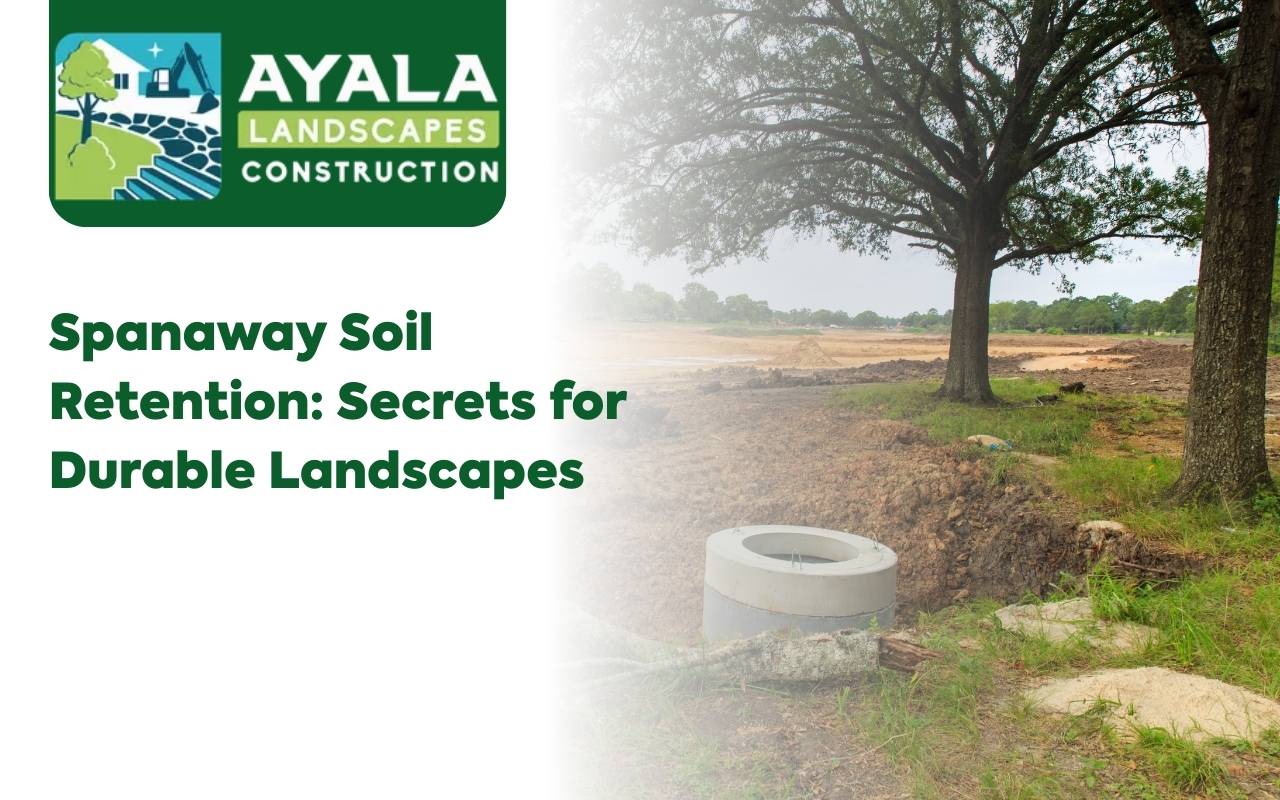
Every landscape enthusiast in Spanaway knows that beneath lush greenery, the true foundation of a thriving garden lies hidden. Soil retention is not just an agricultural concept; it is a vital factor that transforms backyards into durable and beautiful spaces. Whether facing rainy seasons or protecting natural features, mastering Spanaway soil retention ensures long-lasting landscapes. Neighbors with flawless gardens often rely on these techniques. Soil retention anchors land against erosion and boosts environmental stability. With the right methods, you enhance beauty while protecting your property. Let’s explore proven strategies to strengthen your landscapes for the future.
Importance of Soil Retention in Spanaway Landscapes
Soil retention is critical for protecting Spanaway landscapes. With heavy rain and slopes, unprotected soil quickly erodes, leaving plants exposed. Using Spanaway soil retention methods shields trees, shrubs, and hardscapes from costly damage. Proper retention also improves water flow and nutrient balance. Stabilized soil absorbs moisture evenly, reducing runoff and keeping plants hydrated. Beyond garden health, retention helps local ecosystems by preventing sediment from polluting streams. By adopting these practices, homeowners ensure beauty, resilience, and ecological responsibility across their landscapes.
- Protects against erosion and soil loss
- Supports healthy root systems and vegetation
- Preserves local waterways and biodiversity
For tailored solutions, explore our
retaining wall services designed to fortify your property.
Characteristics of Ideal Soil for Retention
Good soil for Spanaway soil retention combines structure, porosity, and organic matter. Clay helps bind particles, while sand balances drainage. Compost adds nutrients and improves moisture capacity. Well-structured soil allows water to soak without pooling or running off too quickly. Conducting soil tests guides you in adding the right amendments. For example, sand enhances drainage, while peat moss increases retention. By creating balanced soil, you provide stability for plants and resilience against erosion.
- Clay binds soil particles
- Sand supports proper drainage
- Organic matter enriches structure and fertility
Assessing Soil Erosion Risks in Spanaway
Identifying erosion risks helps prioritize retention efforts. Watch for bare slopes, exposed roots, or runoff channels after heavy rains. These signs reveal vulnerable areas that require attention. Natural factors like rainfall and slope steepness, along with human activity, increase erosion. Mapping risks allows you to apply Spanaway soil retention techniques where they matter most, ensuring cost-effective and durable results.
Best Practices for Soil Preparation and Conditioning
Proper preparation is vital for soil stability. First, grade your yard to direct water flow away from vulnerable areas. Loosen compacted soil to promote root penetration and improve air circulation. Next, add compost to strengthen soil structure and retain nutrients. Sand or perlite can boost drainage in clay-heavy areas. Adjust pH levels through lime or sulfur based on soil test results. These steps create a solid foundation for strong vegetation growth.
Learn more about professional support with our
landscaping services designed for long-term soil health.
Implementing Effective Drainage Solutions
Drainage is essential for Spanaway soil retention. French drains divert water before it destabilizes soil. Swales and rain gardens slow runoff while nourishing vegetation. Even simple dry creek beds direct water safely away from slopes. By incorporating drainage, you reduce hydrostatic pressure and protect your property. These systems also conserve water and enhance the landscape’s appearance.
- French drains for subsurface water control
- Swales and rain gardens to manage runoff
- Downspout extensions to protect slopes
Choosing Suitable Plants for Soil Stability
Vegetation strengthens soil naturally. Roots anchor the ground, and foliage shields surfaces from raindrops. For slopes, choose deep-rooted grasses, sedges, and groundcovers. In wetter zones, add water-loving plants like marsh marigold. Trees such as willow and dogwood offer strong root systems. Always prioritize native species for better adaptation and reduced maintenance. Plant selection is central to Spanaway soil retention success.
Utilizing Mulching Techniques for Soil Retention
Mulching protects soil from direct rain impact. Organic mulches like bark and straw reduce erosion while enhancing soil fertility over time. Apply mulch in 2–3 inch layers, keeping it away from stems. On steep slopes, combine mulch with jute mats for added stability. Living mulches like clover provide year-round cover, retain moisture, and increase biodiversity. Together, these strategies build strong, erosion-resistant landscapes.
Incorporating Terracing and Contouring for Sloped Areas
Terracing transforms steep slopes into manageable sections, reducing erosion and adding structure. Use stone, timber, or gabion walls to hold soil securely. Contour planting aligns vegetation with natural slopes, slowing water flow and capturing nutrients. Both methods integrate seamlessly into Spanaway soil retention strategies while improving the beauty of landscapes.
FAQs About Spanaway Soil Retention
What is soil retention?
Soil retention is the practice of stabilizing soil to prevent erosion and maintain healthy landscapes.
Why is soil retention important in Spanaway?
Heavy rain and varied terrain make Spanaway landscapes vulnerable. Retention prevents soil loss and supports long-lasting gardens.
What plants are best for soil stability?
Deep-rooted grasses, sedges, and native shrubs provide strong anchors that hold soil and reduce erosion naturally.
How does mulching help with soil retention?
Mulch cushions soil against raindrops, reduces runoff, and enriches soil as it decomposes over time.
Can professionals help with soil retention?
Yes, experts design tailored solutions like retaining walls, drainage, and planting plans. Contact our
team today for guidance.
Maintenance Tips for Long-Term Soil Retention Success
Regular care ensures retention methods remain effective. Inspect slopes after storms, repair gullies promptly, and refresh mulch where needed. Replace failing plants quickly and maintain continuous coverage. Perform soil testing seasonally to correct nutrient imbalances early. Stay proactive by adjusting strategies as conditions evolve, ensuring landscapes remain durable year after year.
For reliable maintenance solutions, consider our
concrete work services that complement retention efforts.
Sustainable Strategies for Durable Spanaway Landscapes
Combining preparation, planting, and drainage creates resilient landscapes. These methods preserve soil, protect water, and enhance beauty. With ongoing maintenance, your garden will thrive sustainably. Investing in Spanaway soil retention today builds long-term value and supports the environment for generations.
